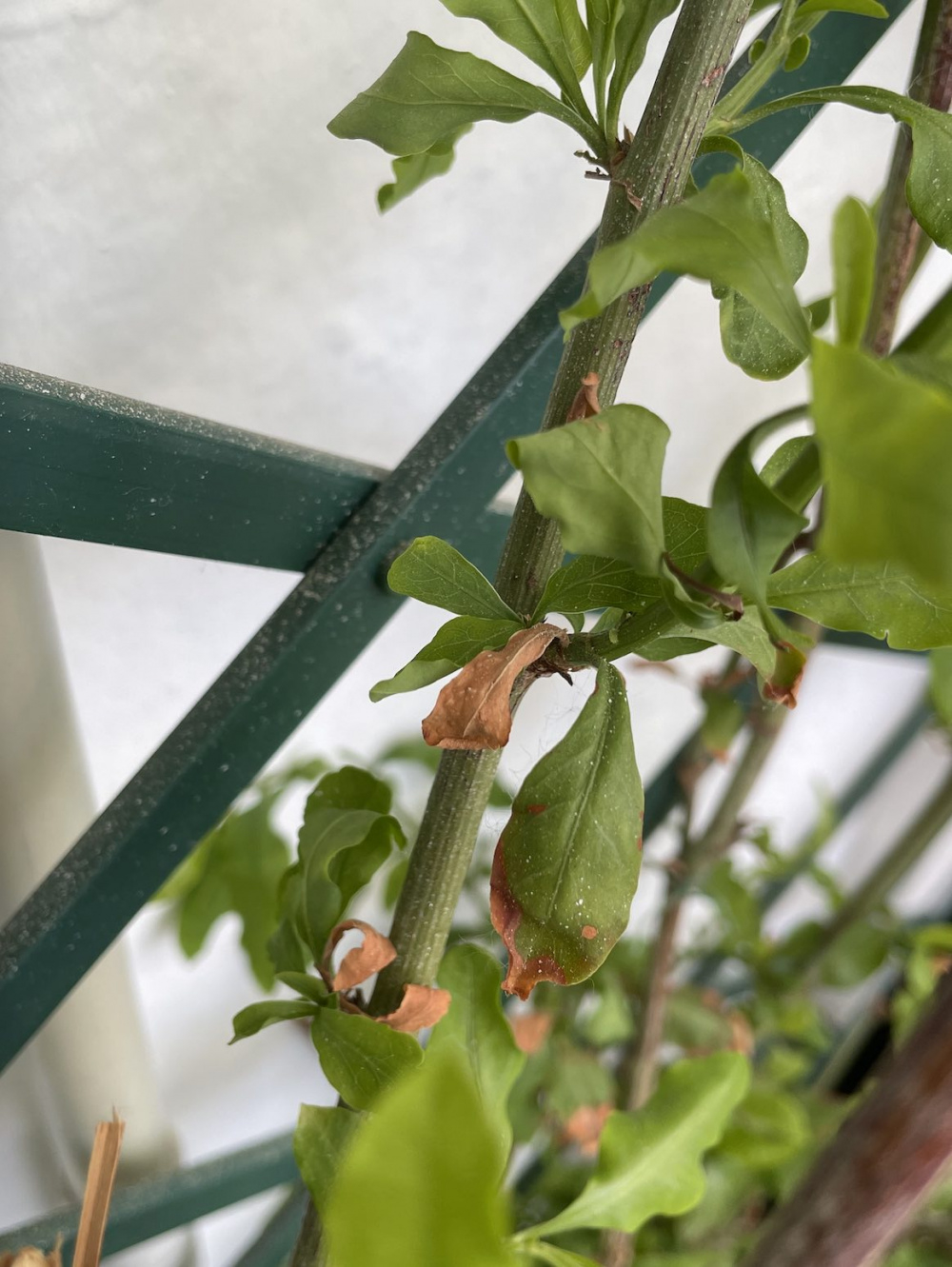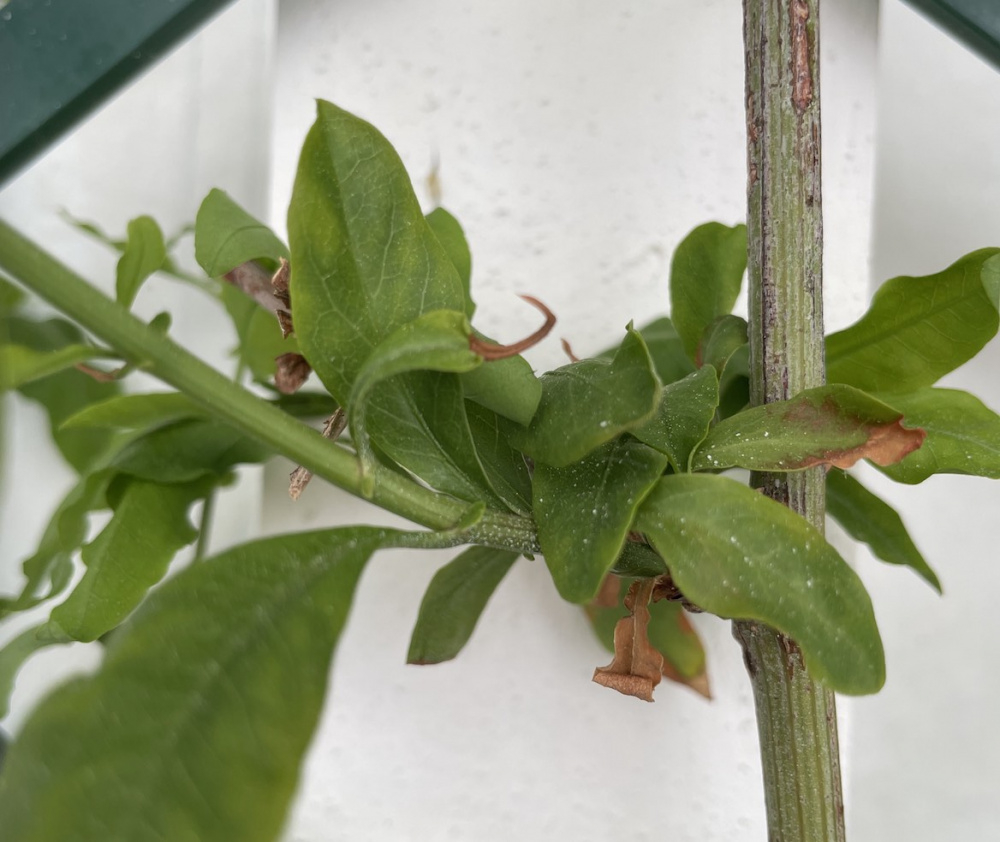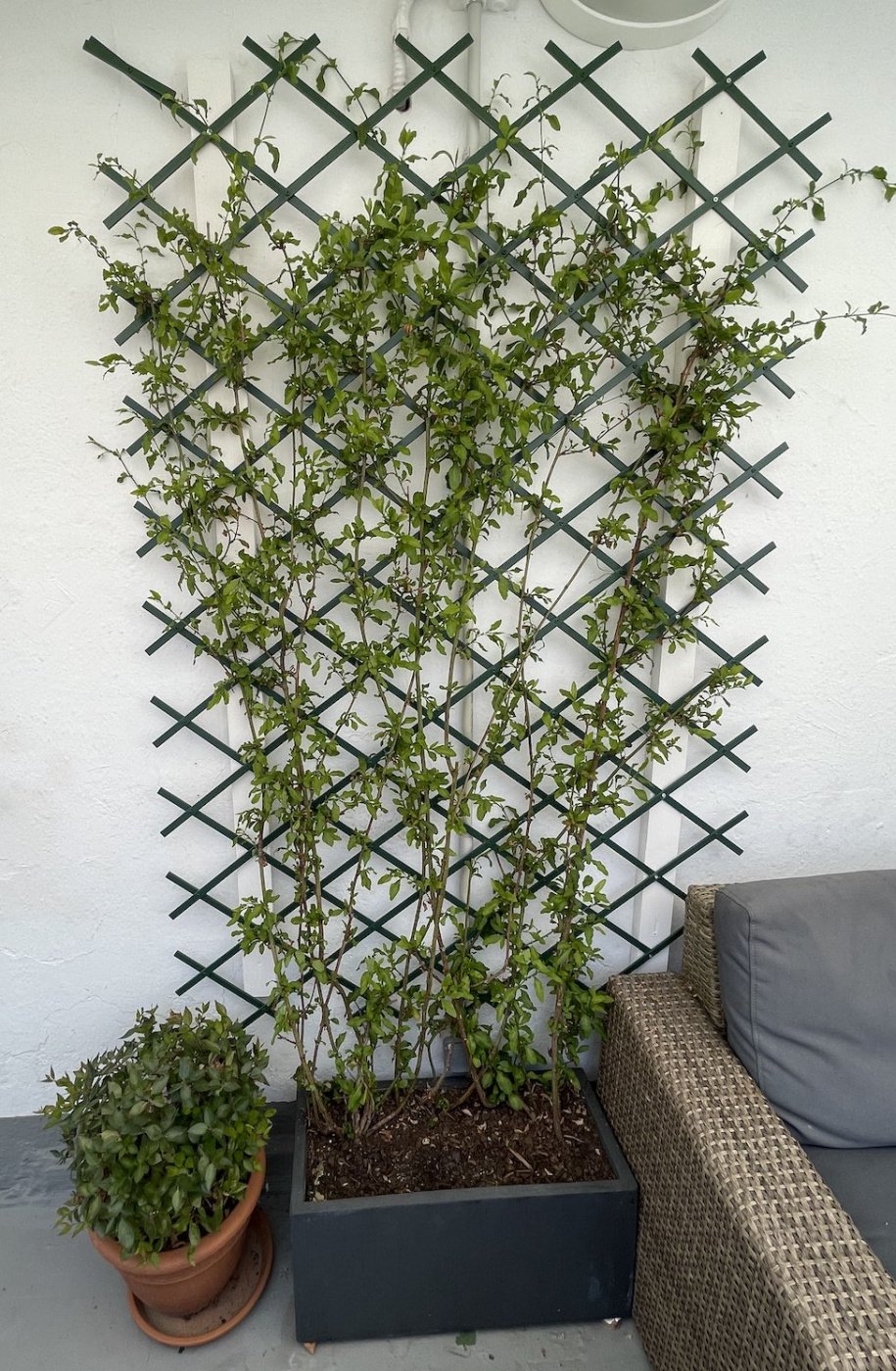This Forum will close on Wednesday 27 March, 2024. Please refer to the announcement on the Discussions page for further detail.
Problems with Plumbago
Hi All,
My outdoor, container-based plumbago (plumbago auriculata, cape leadwort) is finally growing well but still shows signs of problems.
My outdoor, container-based plumbago (plumbago auriculata, cape leadwort) is finally growing well but still shows signs of problems.
I have just re-potted it in acidic soil and added 10% sand to help with drainage, as I know that's important. I think I had been over-watering so now only watering once per week. It's quite hot and dry now (I live in Madrid, USDA Zone 9a) so I wonder if I should water it more. I have two queries and I'd be very grateful for anyone's help!
Firstly, new leaves are sometimes shrivelling and turning completely brown, like in this first photo. What could be causing this?

Secondly, there seems to be a fine white powder gathering on some of the leaves, like in this second photo. Is this normal or could it be some kind of bacterial infection?

The third photo is of the whole plant in its container...

Once again, thanks so much for any help!
0
Posts
https://www.rhs.org.uk/plants/13333/Plumbago-auriculata/Details
No they don’t need acidic compost, but most standard composts, acidic or otherwise, don’t hold nutrients for long, a good loam-based soil/compost is better but hard to find in Spain. I use Bures Tierra when I need a potting medium with more oomph for hungry plants, but it’s very heavy so I usually mix it roughly 40% Tierra to 60% sustrato universal. I would also mix in a few handfuls of grit to aid drainage for Med plants. Grit is better than sand, more free-draining, especially if the sand is standard, cloggy builder’s stuff rather than sharp sand. The grit I use is Bures Granito de Ortosa.
I also agree with Obelixx a deeper pot would have been better. If you can bear the thought of repotting again, don’t attempt to do it now when in growth, wait until it’s dormant in winter, cut it down and try the above potting recipe!
Nollie, I really appreciate your advice re re-potting solutions. Do you live in Spain too? Which shop is the best for those things you recommend? I have found it difficult to come across compost solutions etc - most shops just have 'sustrato universal' which might not be great for these types of plants.
The white dust is definitely coming from the plant itself. Do you have any experience with this type of plumbago? If so, and if you haven't seen the white powder before, it must definitely be some kind of infection. But I read somewhere online that it was a natural deposit from this plant (though this was disputed by other sources!).
To answer your other questions, it has not been especially cold since these new leaves have sprouted - never below 5 anyway. And there is not much wind at all where the plant is, so shouldn't be wind-burn either.
As for the container, it might look shallow in that photo but is actually about 40cm deep. Is that still too little for a plant of this size?
Finally, how much do you think I should be watering it?
Thanks again!
Bures is a Spanish brand name, I buy it from Centre Verde, don’t know if they have one in Madrid, but just keep an eye out for their Tierra (40L lilac-coloured bags).
OK, your planter is deeper than it looks and is probably fine! As to watering, it’s really difficult to generalise as our climate/conditions are so different. Generally, better to water it really well and deeply so the compost is soaking, then let it drain and dry out a little before watering again - so a good water once or twice a week is better than a daily sprinkle that won’t penetrate properly to the roots.
Actually I was wrong about the container - it is about 30cm deep. Is that too little, do you think?
Thanks for advice re watering - I find it very difficult to know how much to water it... I think I was over-watering it before, causing it problems. Now I water it once per week, and I think that might be too little given the hot temperatures recently.